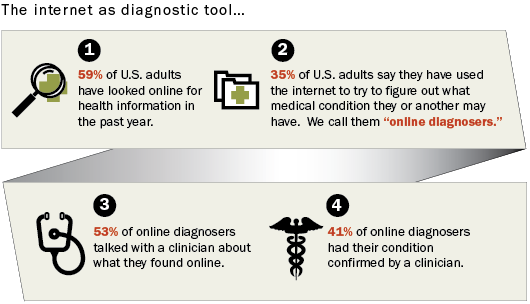How to Diagnose Medical Conditions

Medical diagnosis is basically the process of defining a person's illness or disease by identifying the underlying causes. In many cases, it is simply called diagnosis without the medical context being implied.
The medical profession is an ever-changing science that takes in many different disciplines
These disciplines are used to help diagnose various diseases and illnesses. The different areas of medical investigation include anatomy, physiology, genetics, pharmacology, and pathology. It also includes biochemistry and microbiology.
The human body is made up of many organs that are interconnected in different ways. When diagnosing a disease, the physician must be able to isolate the causative agent of the disease, such as bacteria, viruses โรคหัด, fungi and parasites. Then he / she must determine how the disease affects the body. The diagnostic process involves assessing the physical characteristics of the patient, his / her medical history and his / her symptoms.
Doctors who are well trained in the methods used to diagnose medical conditions can make a diagnosis without the use of laboratory tests. Some physicians even go as far as doing the treatment themselves and using some home remedies in order to speed up the process. Other doctors will have their patients undergo several treatments in order to confirm the diagnosis.
During a physical exam, a physician will examine the patient's physical characteristics. A health care provider will look for visible symptoms such as abdominal pain or diarrhea. In addition to examining the physical symptoms, the physician will also observe the patient's behavior and reactions to the surroundings. These behaviors can also be used to diagnose a medical condition. Sometimes, a doctor may also take a sample of blood to see if the symptoms are caused by another medical condition.
A physical examination is used as a diagnostic tool because it helps doctors determine a patient's overall condition. There are several other things that a health care provider may be able to determine during a physical exam. These things include the patient's mental status, his/her ability to maintain proper body movement, blood pressure, and heart rate. Also, the doctor will be able to see if the patient has a history of any medical conditions, and if they have experienced any complications from their previous medical treatments. These complications may help him/her make a determination on whether the current treatment plan of treatment is appropriate or not.

When the doctor is able to diagnose medical conditions, the doctor will then perform a series of tests, which will ultimately reveal if a patient is suffering from a medical condition or if it is another ailment. A test known as a spinal tap test can also be used to diagnose a medical condition. This test can also be used to verify that a patient is experiencing a herniated disc and to determine if there is any structural damage within the spine.
After performing a series of tests, the health care provider will make the diagnosis. If necessary, the doctor will prescribe medication and/or therapy in order to correct any structural damage within the body. If a treatment is prescribed, a physical examination will usually occur immediately to confirm the diagnosis. Sometimes, it may be performed more than once to make sure that the right treatment has been applied.
In order to get a specific treatment, the doctor will discuss the symptoms of the symptoms with the patient. The symptoms may cause some discomfort to the patient and can sometimes be confused with other illnesses. Because of this, it is important for a health care provider to ensure that the patient is experiencing an actual problem rather than just being bothered by the symptoms of a medical condition. Once the correct diagnosis is made, the doctor can make a plan on how to treat the medical condition.
After a diagnosis is made, the doctor can determine which treatments to use in order to treat the specific medical condition. Usually, the treatment plan includes one or more of the following: exercise or physical therapy, surgery, or both. In some cases, the treatment plan may also include prescription medication or counseling.
It may take time and effort to diagnose medical conditions. However, by doing so, the patient can get the best treatment possible. In some cases, the patient will need to undergo several treatments. This may help to cure the condition or prevent recurrence.
